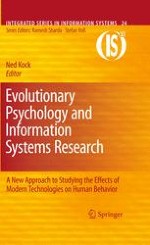2010 | OriginalPaper | Chapter
7. Who Is in Your Shopping Cart? Expected and Experienced Effects of Choice Abundance in the Online Dating Context
Authors : Alison P. Lenton, Barbara Fasolo, Peter M. Todd
Published in: Evolutionary Psychology and Information Systems Research
Publisher: Springer US
Activate our intelligent search to find suitable subject content or patents.
Select sections of text to find matching patents with Artificial Intelligence. powered by
Select sections of text to find additional relevant content using AI-assisted search. powered by
